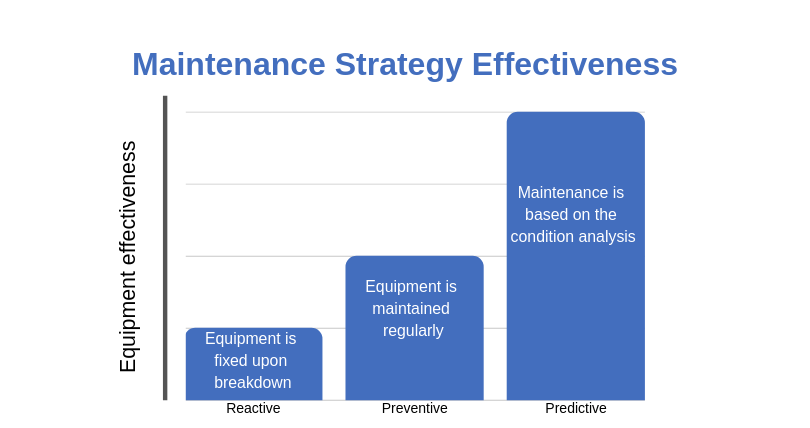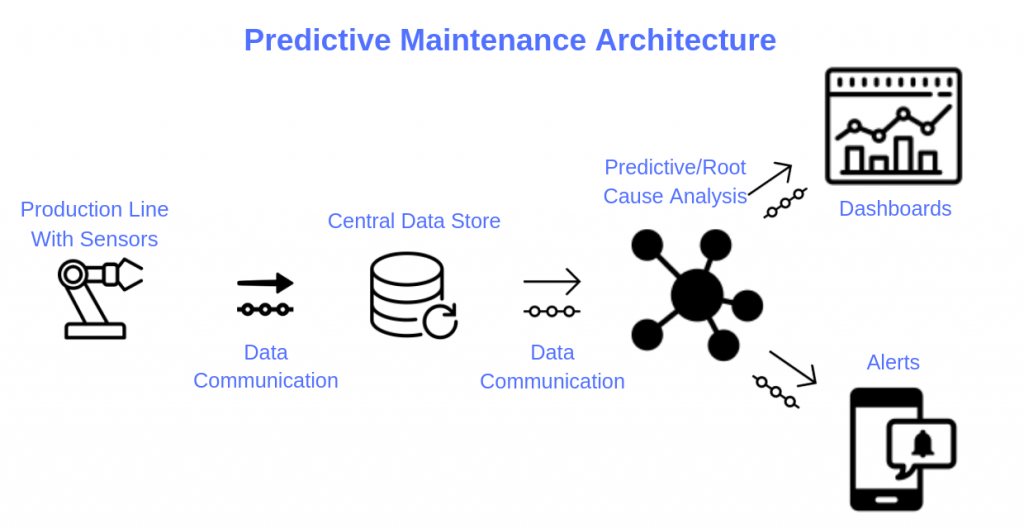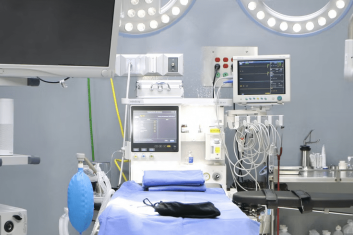Equipment failure has been a burden on manufacturers’ shoulders for far too long. Never-ending repairs and emergencies have taken away enough of the equipment uptime and production efficiency, lowering profits and draining budgets.
But fear no more: The end of failing equipment is nigh. Behold — Predictive Maintenance is here to help you optimize your business.
What Is Predictive Maintenance?
Predictive Maintenance, or PdM refers to maintenance that is meant to predict every possible hardware failure scenario, alarming administrators as appropriate and suggesting possible preventative solutions.
When it comes to equipment maintenance strategies, there are a couple of ways to address the issue of equipment failing. Apart from predictive maintenance, some of the most practiced ones include the following:
- reactive maintenance — maintenance which is conducted when hardware has already broken down. The aim of that is fixing it and getting it back on track as soon as possible. This involves close to none planning and no up-front costs; it is being the shortest-term approach. “Who needs repairing when there’s nothing to repair?” — the saying would be the most suitable motto;
- preventive maintenance — it is performed on a regular basis in order to prevent unexpected hardware failure. The hardware is maintained while still operational.
These three strategies differ in their effectiveness, required time, and expense. As shown below, PdM is the most effective one at reducing downtime and boosting production efficiency.

Maintenance strategy effectiveness
How Does Predictive Maintenance Work?
Predictive Maintenance is performed through constant monitoring of equipment conditions, extracting data and analyzing it to predict possible flaws that the hardware might have.
For operation, the PdM system relies on a specific infrastructure for data to be transferred among PdM system components. The Internet of Things technology is able to provide the structure needed for seamless data exchange.
The PdM system includes the following devices and processes:
- sensors – they are installed on equipment, performing vibration analysis, oil analysis, thermal imaging, and many other checks;
- data communication — the infrastructure that allows data to be transferred between sensors and a data center;
- central data store — a hub where data flows to be processed and analyzed;
- predictive analysis — predictive analysis that is applied to the gathered data to identify patterns and provide insights. The administrating engineer gets the insight in the form of dashboards or alerts;
- root cause analysis — it is usually carried out by maintenance engineers with appropriate expertise, but it can also be performed with dedicated Predictive Maintenance software. The engineer or the program looks into the analytics provided by algorithms and decides on the correct response.

Predictive Maintenance Architecture
The process is as follows: sensors gather data from the production equipment and transfer it through the data communication system to the central data store. The sensor data flow through the data communication system. The same system is used to integrate the data from Enterprise Resource Planning and Manufacturing Execution Systems in order to provide context for analysis. The predictive analysis generates insights based on the received data, and root cause analysis suggests the most suitable response.
Want to build a predictive maintenance solution?We are ready to leverage our expertise to deliver a top-notch solution.
Julia Tuskal
Head of Sales
at HQSoftware
How Can Businesses Benefit From Predictive Maintenance?
[emaillocker]
Manufacturers and other businesses can benefit a great deal from thinking ahead. Predictive Maintenance may be useful with:
- reducing maintenance time — according to Deloitte Insights, maintenance aimed at preventing equipment failure reduces maintenance time by 20-50 percent and decreases maintenance costs by 10 percent;
- increasing production efficiency — devices involved in predictive maintenance generate insights that boost overall equipment effectiveness. Predictively maintained equipment doesn’t require sometimes unnecessary preventive maintenance, has more favorable uptime to downtime ratio;
- developing new revenue sources — Original Equipment Manufacturers which have already implemented PdM into their production process are able to monetize their infrastructure, providing customers with analytics, as well as data-based maintenance schedules;
- improving customer satisfaction — clients are happy when the products they have purchased are of good quality, are well maintained, and are quickly repaired;
- competitive edge — since predictive maintenance increases product quality, it has a positive effect on the company’s brand. The company is seen as more valuable to customers, which allows products to stand out among competitors.

Predictive Maintenance Advantages
[/emaillocker]
What Are the Downsides?
Every sweet has its sour, and Predictive Maintenance is no exception. Let’s review some of its disadvantages:
- high upfront cost — when compared to other types of maintenance, PdM requires a lot more expenses for installation. The condition monitoring equipment is technologically advanced and needs IoT infrastructure to operate, making the setup cost very high.Despite these costs, though, installing Predictive Maintenance equipment will pay off in the long run: in 2025, the savings on repairs will reach $240 to $630 billion among manufacturers. To save money, some companies avoid building their own systems, relying instead on condition monitoring contractors.
- staff – Predictive Maintenance technology is quite advanced, meaning that installing, configuring, and running it takes special training and expertise. Hiring professionals or training existing staff both add expense.However, Deloitte states that poor maintenance strategies cost manufacturers around $50 billion annually. A final decision should be made with caution and after a thorough investigation of the most suitable maintenance strategy and careful choice of software maintenance services.
Predict, Maintain, Gain Profit
Predictive Maintenance is a valuable asset in the Industry 4.0 initiative. With more ways of production automation, advanced maintenance strategy pushes the technology even further.
Even though it takes a lot of money and training time to get the system up and running, all of the expenses will definitely pay off through reduced equipment downtime, increased productivity, and better production efficiency. Manufacturers can also offer Predictive Maintenance services to companies who lack the resources required to have their own, thereby generating new sources of income and gaining a competitive edge.

Founder
Hey! Welcome to our blog!
The topics we cover include IoT, AR/VR, related news, and our projects.If you’d
like to discuss an article, please
messsage
me on LinkedIn
Related Posts
View All
We are open to seeing your business needs and determining the best solution. Complete this form, and receive a free personalized proposal from your dedicated manager.

Sergei Vardomatski
Founder





